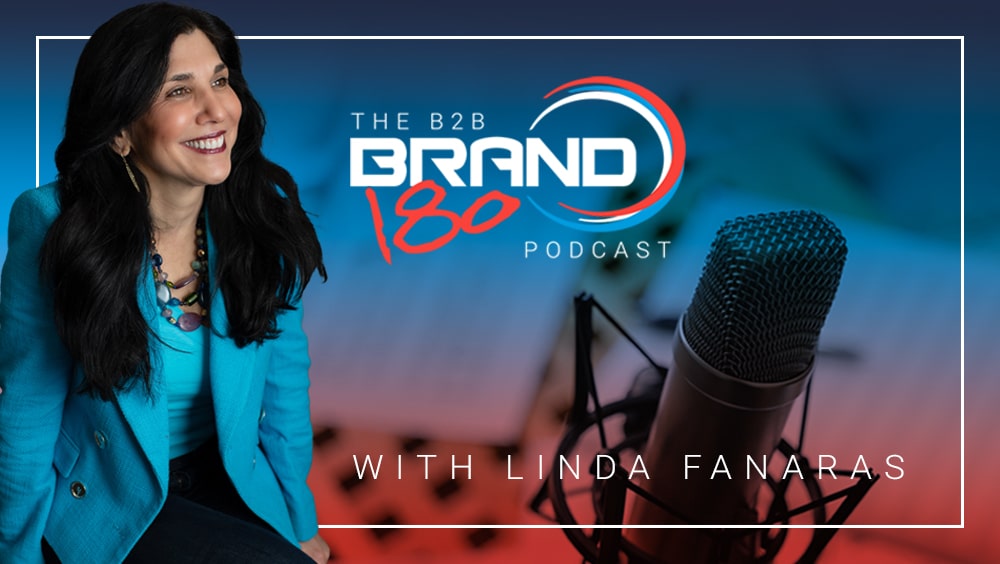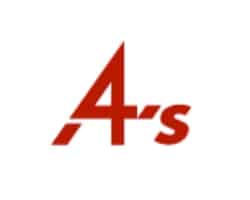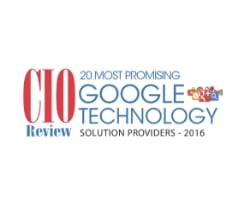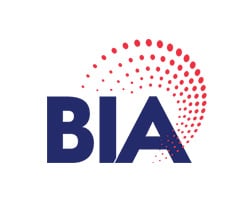In this episode of the B2B Brand180 podcast, Linda interviews Chuck Aikens, Founder of Tymoo and content marketing expert, to discuss effective use of AI in B2B content strategies.
Chuck shares insights on the essential foundational work required before leveraging AI, including understanding target audiences and answering critical strategic questions before writing prompts. He delves into the concept of micro-segmenting audiences, optimizing metadata, and generating authentic content.
Linda and Chuck also review practical advice on using AI for crafting compelling headlines, FAQs, product descriptions, and social media posts.
Chuck also introduces his Tidal Wave Content platform, a comprehensive suite of training, coaching, and processes that helps brands create consistent, engaging content across multiple channels using AI-assisted tools.
01:28 Foundational Work Before Leveraging AI
03:53 Micro-Segmenting Your Audience
05:27 Using AI for Metadata and Content Creation
07:48 Balancing Brand Voice with AI
09:39 Quick Tips for Using AI in Content Creation
15:02 Long-Form Content Strategies
16:55 Tidal Wave Content Concept
More About Chuck:
-LinkedIn Profile: https://www.linkedin.com/in/chuckaikens/
-Tidal Wave Content: https://www.tidalwavecontent.com/
-Deciphering Digital Podcast: https://www.youtube.com/@decipheringdigital
-Consulting Website: https://chuckaikens.com/
Linda’s LinkedIn: https://www.linkedin.com/in/lindafanaras/
Millennium Agency: Brand Strategy | Marketing | Web Design: https://mill.agency
YouTube Channel: https://www.youtube.com/@mill.agency/
Linda’s Books:
Claim Your White Space
https://www.amazon.com/CLAIM-YOUR-WHITE-SPACE-CRITICAL-ebook/dp/B0CLK8VLYV
Passion + Profits: Fueling Business And Brand Success
https://www.amazon.com/Passion-Profits-Fueling-Business-Success-ebook/dp/B0CLLDDSNX/
Linda Fanaras:
Hi, I’m Linda Fanaras, host of the B2B Brand180 podcast and CEO of Millennium Agency. Today, I am excited to bring in Chuck E. Atkins, founder of TAMU and a seasoned expert in content marketing and leveraging AI. He has two decades of experience in website development, SEO and digital marketing, and he’s going to bring us a wealth of experience today, particularly when it comes to content strategies and how to really use AI to elevate brand presence. And connect more effectively. He has this concept called title wave content platform. It’s a suite of training, coaching and processes that also help brands create consistent, engaging content across multiple channels using a I. So welcome, Chuck. Great to have you here today. I’d love for you to share with the audience a little bit about yourself.
Chuck Aikens:
Well, Enda, thanks for having me. a little bit about myself as it relates to what we’re talking about today, I had a search so called SEO and content agency for about 15 years in Denver, Colorado. sold it a few years ago and have been out just working directly with brands still in the content marketing space, which can include social media and email. But yeah, that, that’s a little background. It’s all I’ve ever done. I even not to date myself, but I was even doing content is Google came along many, many years ago. So, been been at this for a long time.
Linda Fanaras:
Yeah. So you’re a true expert. That’s great to hear. I think we need to talk a little bit more about the foundational work before actually leveraging the I tools. And I think this is where a lot of businesses and marketers may go wrong. It’s really how to use a I in the most effective way. Can you speak to the audience about that a little bit?
Chuck Aikens:
When we first heard about Chad, GBT, or if you use a different a I tool you go to the prompt and you start asking it to do things to see what it can do. And, you know, some people started with planning their vacation or doing a recipe or something personal. And some folks jumped right in and started applying it to their work to their job, to their brand. And it’s okay to start at the prompt and play along and see what happens. But, but these foundational documents that are needed. For a, for a business, for a brand, or are things like who’s your target audience? So what kind of guidelines do you want to give AI when it’s writing? What are your value props? What is your product and service? This concept of giving it some direction so that it can help you. As an AI assistant is, is fundamental. So there’s a lot of work to be done before the prompt, anytime that you’re trying to, to do something for your business or your brand. And it’s okay to start in the middle, kind of get acquainted with it. But to really use AI as a marketing assistant, you have to have a strategy, you have to have intention, you have to have a target audience. And that, those foundational documents are the starting point. Actually, the starting point. That I teach and coach is your customer, is your target audience and often micro segmented down into multiple. and target audience depending on exactly what you might be doing with your tasks. So that’s a little bit about the, the foundational documents and what is that ready, fire, aim aim first you know, before you fire off the prompts.
Linda Fanaras:
Yeah, exactly. And I think also it’s important for our audience to realize that when you do look at tools like AI, you almost have to look at it from the Perspective of Okay, first of all, I need to train a eye into your point, Chuck. Okay, who is my audience? Who’s my target audience? What am I trying to communicate? And are there any specific niches that you really need to cater to instead of coming back with generic copy? So I love to talk about micro segmenting the audience because I think this also helps to really develop content that is much more in line with what the marketer business or client is looking for. So can we speak about that a little bit? I think that’s an important thing to tackle today.
Chuck Aikens:
Yeah. Well, one one simple way for B2B to micro segment is to just to think about the different roles that might be involved in, in the, the buying committee at your ideal client profile. So, maybe there’s the CFO, maybe there’s the salesperson, maybe there’s a product manager, the CEO, like all of these all of these different folks you know, that they’re different roles at the ICP. So you could micro segment by role. With a B to B, I often will have each one of these personas built out. Now it, since I’m, since I do a lot of persona work, I will say, and we’ll talk about this at the end, but I, but I have a, a persona building tool that if you answer some quick questions, you can make these personas fast. And the reason that’s important is if we’re talking about. Having maybe four or five personas into the buying committee of your target client, like that takes work. So how can we do it faster? Maybe you micro segment by industry. So you have a persona in, in this vertical that you’re targeting versus that one. If you have to message our market to different folks that becomes a persona that becomes somebody that you can personify that way. When you go to work with A. I. It knows who you’re trying to talk to,
Linda Fanaras:
right? Right. And it can be very, very targeted as far as the communication and messaging is concerned. You know, there’s a lot of different ways to use A. I. You can use it to generate customer journeys. Yeah. Email, social media. I mean, the list goes on. But what about when it comes to actually creating metadata? How do you recommend our audience to use AI in a way that helps to identify maybe Yeah.
Chuck Aikens:
And that’s a great question. So, you know, the, the most important piece of metadata you’re going to have in, in a piece of content is going to be the page title. So what, you know, like a lot of people will go to a prompt and say, write my page or write my post or write my email,
Linda Fanaras:
you
Chuck Aikens:
There’s an entire thought process or prompting that can go into the 60 characters that make up your page title and where the keyword is placed. And more importantly, what is the keywords you’re targeting?
Linda Fanaras:
Right.
Chuck Aikens:
The, you know, how, how competitive or you know, popular is that, is that keyword or does anybody even type it? Maybe they don’t, maybe they don’t even search it. So there’s this concept of having, using AI to help create ideas for your page title metadata that can be used as that, that leading indicator to Google about what the content of the page is about is it is one way to put the metadata the other way. And this is a little advanced, but you know, you can, you can use AI to help understand how to make the content more helpful. More comprehensive because while the alt tags and the title tag metadata is important, it’s also about all the different words that you use. Because if if a piece of content has a thousand or 2000 words, what are those words that are being used? You want AI can help you with that. What four or five or six topics should I cover? Okay. You can ask AI that to make sure that you’re creating a helpful, useful piece of content because that, that’s what Google’s doing is they’re going through your copy and saying, Hey, is this deserving to be in the top 10? Right? If it’s going to be in the top 10 and page one, it better be helping your target audience. That is what Google cares about. Most their last big algorithm update, which was in March of this year, was called the helpful content update. That is the benchmark. They don’t care if you use AI. It better be helpful. It, it better be adding and contributing to the search experience for your target audience.
Linda Fanaras:
that’s a great point too. So thanks for sharing that with our audience today. So if you were to take you know, I guess the question is, is trying to balance, you know, a unique voice that a brand has. the authenticity of using AI in a way that maybe is generated in a very, like, what I’ll call common way, because it often comes back with a very similar language. So how do you start to balance using that brand’s unique voice and actually being able to leverage AI into a way that can help build out effective content.
Chuck Aikens:
Yeah. One of my favorite techniques at the moment is to actually conduct video interviews of people that either are in the brand that they’re the person that created or owns the brand works for the brand or somehow is associated when, when you start with a video interview and you get the sound bites and the authentic language and nuances that that a human brings to the table. Then as you go to use AI to build out that content to write something, you get such a better piece of content that is authentic because it started from a human perspective. Now I can do that with written word and people can talk into their phones. There’s different ways to start with authentic content. But by far, my favorite is to just jump on zoom for 45 minutes not to belabor, but, but, but typically a 45 minute interview with someone who understands and is passionate about the brand, not even passionate, just understands it can result in, in multiple pages of content for the website or the blog. Social media clips, video clips. Just what is it that you know? What is it that you want to talk about? If I start there, the content ends up being so much more authentic and real than if you start at the prompt.
Linda Fanaras:
No, that’s good. So I would love to run through. I’m going to kind of quiz you and say, you know, how do you use a I to generate content for X, Y, Z. And I’d love for you to give the audience maybe 123 sentences. Real good solid takeaways, make sure you do this or make sure you don’t do that. So do you mind if we get stuck? What can we go for it? Quick, quick
Chuck Aikens:
answers. And yeah, let’s run
Linda Fanaras:
through it. So, all right, first of all, I would love you to tell us how you would use AI to craft compelling headlines. That really entice the user to click.
Chuck Aikens:
Yes. So, I actually would not start there. The way to get a headline usually happens after the content is written. Now, I’ll think about the hook initially. I will ask AI to say, hey, what is the hook that might be used on a LinkedIn post or, you know, something in social media? And that will be an opening paragraph. Even if I have that hook in the beginning, once the content is written. I’m going to go back to AI and say, rewrite the hook. Okay. The hook is usually a little bit closer to the end of the process.
Linda Fanaras:
Okay. All right. And how would you use AI to generate maybe a helpful FAQ?
Chuck Aikens:
Oh, that’s a great. So if you have your persona and one of the things that we do with the persona immediately is figure out the pain points. And the problems to be solved and, and the value props with those items. I can use that data, usually with a product or service page and create seven FAQs that I love putting on homepages because it really lifts up the SEO. But the writing of a question, Followed by an answer. When you have your target audience, your brand promise, your value props, the things you’re trying to solve is is something that AI does really good at. So a real simple prompt with those inputs should give you a lot of FAQs.
Linda Fanaras:
Perfect. So how would you approach writing product or service descriptions using informative and persuasive?
Chuck Aikens:
So, so the biggest thing I would do there is, is as you write your prompt, you know, act like a copywriter, just gets into, to general marketing and messaging. That the thing that I see most people do is write in first person,
Linda Fanaras:
just
Chuck Aikens:
asking AI to use active voice, write in second person and use simple language will improve almost every product. Our, you know, our service page of B2B because we’re, we’re always, I mean, most websites, it’s all about I and what I do, not what you receive. So just, just taking your copy that you probably have and saying, please rewrite this in second person in simple language, don’t use long paragraphs, bullets, like making it scannable. Usually improves the efficacy of the product page.
Linda Fanaras:
So how would you help our audience uncover competitive data in a few sentences?
Chuck Aikens:
Yeah, so competitive data usually what you’re looking for is you as a brand or your competitor should be trying to establish topical authority on something relevant in your industry. What do you stand for? What are you talking about? So what AI can do is it can crunch a lot of data really fast. So I use AI to look for trends in content. And maybe even opportunities across the industry. If I were looking at four or five competitors to see what are they covering? And often it’s not very targeted and succinct. Sometimes it is, but I would be using that to say, you know, if I talk about this aspect, of what’s going on in the industry. Then I could establish topical authority, which will help in search and uh, you know, even in the eyes of, potential clients, perfect.
Linda Fanaras:
And then social media, I know a lot of companies use. AI for their social media can be very generic sometimes and just regurgitate a lot of the same things. How do you get that to be a little bit more creative and unique?
Chuck Aikens:
What I’m going to do most of the time, and let’s just say, since this is B2B, you know, we’re talking about LinkedIn, which is long, longer format than most social media platforms. Really, I’m always trying to go from, super long format. So let’s say a video transcript or a blog post down into the smaller LinkedIn post. Again, if we’ve, if we’ve done things like video interviews and thought leadership and informative content in our content waves, all of a sudden that is what informs the LinkedIn post. So I’m not just randomly looking for a LinkedIn post. It’s because it’s part of a wave of content where the LinkedIn post Is just one outcome, just like, you know, an excerpt for an email might be, or you know, a, a quick a quick video clip on YouTube. If, if you have a good content strategy, ultimately the social media content will show up as unique and compelling and engaged audience. If you just start at the prompt, trying to make a LinkedIn post, it will not work, right? It’ll, it’ll sound like everybody else is putting out there. You have to stop for a second and say, what do I want to be a topical authority on? That’s interesting to my audience and what is my wave of content going to be about?
Linda Fanaras:
Okay. Once you do
Chuck Aikens:
that, it can flow so much easier and the LinkedIn post becomes so easy to write because it’s on strategy. It’s on, it’s on target.
Linda Fanaras:
That’s a good point. So, the last quick question would be on long form content. Could be a blog, could be an article, could be a white paper. What are your thoughts on how to best do that?
Chuck Aikens:
Yeah. So, so think of it as, as a building process meaning that what I teach and what I, when I, when I’m working with a brand and, and making a long form content, you start with an outline and then each part of that outline, often three to five topics that make up the long format content, those are individual writing exercises. And then once you’ve built out the, the topical things you’re going to cover in a, in a long format piece, then you can back up and write the opening. You can write the conclusion. Then you write your hook. So the, the idea is to start with a topic. Understand the helpful subtopics that should be covered. Write each one of those individually, which you can use AI for to create the base copy. Then start working on your intro and your close to tell the whole narrative. And then go and tie it all together and enrich it with quotes and, you know, and images and things. So, most of the time people, they start and say, Ooh, I’m going to, I’m going to sit down and in one shot. I’m going to create this this long format content, and it’s just the nature of trying to do that. No wonder we get writer’s block. There’s too many things going on. But when you understand how to construct it just from a copywriting or an editorial process. It becomes so much easier to produce it because you can follow a 5 step process. It’s a method and an approach that, is more effective. And, and AI can help, help with that. It can help you with an outline. It can help you identify the subtopics. Does it mean you still don’t have to write? Right. And you don’t have to, you don’t have to contribute in unique ways. But boy, it’s so much easier when you, when you can use a tool as an assistant to kind of get you started.
Linda Fanaras:
Right. So I’ll just wrap up here with this thing called title wave content. It’s a concept that you have that really helps brands create more effective strategies. Can you talk about that a little bit?
Chuck Aikens:
Yeah, the first two steps inside a Tidal Wave content is one, do your foundational documents. I have three tools that I built on the website. Quick sign up. There’s no pitch. There’s no money to be paid. You can make your persona brand promise in your voice and tone. From that standpoint, the second step is to start thinking about your first strategy. Whether it be informational. Which is high frequency and low effort, or if it’s going to be high connection and and be really rich pieces that you don’t do whatever the strategy is going to be, that’s usually done in a in a one hour session. And that’s the starting point. And I do offer a one hour session to work with somebody to help them get started, and then from there, who knows? They can do it themselves. We can do it together, I can do it for ’em, but that’s the concept. The Tidal Wave is creating a wave of content that once you say, Hey, this is what I want to be producing, it’s not as much work to be consistently producing content that’s gonna engage with your audience because you understand what you’re trying to do and how to do it. And then it’s just like having a personal trainer or somebody to remind you to say, okay, we’re going to do this two or three times a month. Time to get out of bed and do some writing today it’s having the processes and the checks and balances. But first and foremost, are you doing the right thing? Is it going to work? And you know, whether it’s the optimization that needs to be done. or the research that goes into it to make sure you can truly be a topical authority. that starting point is what Tidal Wave is trying to figure out.
Linda Fanaras:
So we can wrap up. I think that’s a great ending. and I know you offer our custom training session. So I’d love you to close with how individuals, maybe a little bit about today. training and then how individuals can actually get in touch with you. Chuck.
Chuck Aikens:
Yes. You can find me on LinkedIn at Chuck Akins. You can go to Tidal Wave content and sign up. But yeah, the offer is right now a couple of times a week. I’m doing a 90 minute session. It’s it’s typically two 50 for anyone listening. We’ll do it for a hundred bucks. You know, throw me a hundred dollars on PayPal. Just you know, I can’t do it for free, right. We’re all in business, but yeah, if you’ll go through and build those three foundational docs takes about an hour, then we get together and, and, We start working on your, on your content wave how you and your brand could better reach out to your audience through a strategy. And it’s not super complicated. But we have to have conviction and then commitment to that strategy to see it through. Guaranteed, you’ll learn a few tricks about creating content with AI that’ll be helpful.
Linda Fanaras:
Perfect. Thank you, Chuck. So I just want to take a moment and thank our audience today to, for listening in with myself and Chuck at the B2B Brand 180 podcast, we covered a lot of things on AI. And if you would like to connect with me directly, feel free to reach out on LinkedIn at Linda Finaris, or you can just go to lindafanaras.com and feel free to ask any questions that you may have. And if there’s anything we can do for you, we were happy to help. So thanks for listening to the B2B Brand 180 podcast today and have a great day.





























